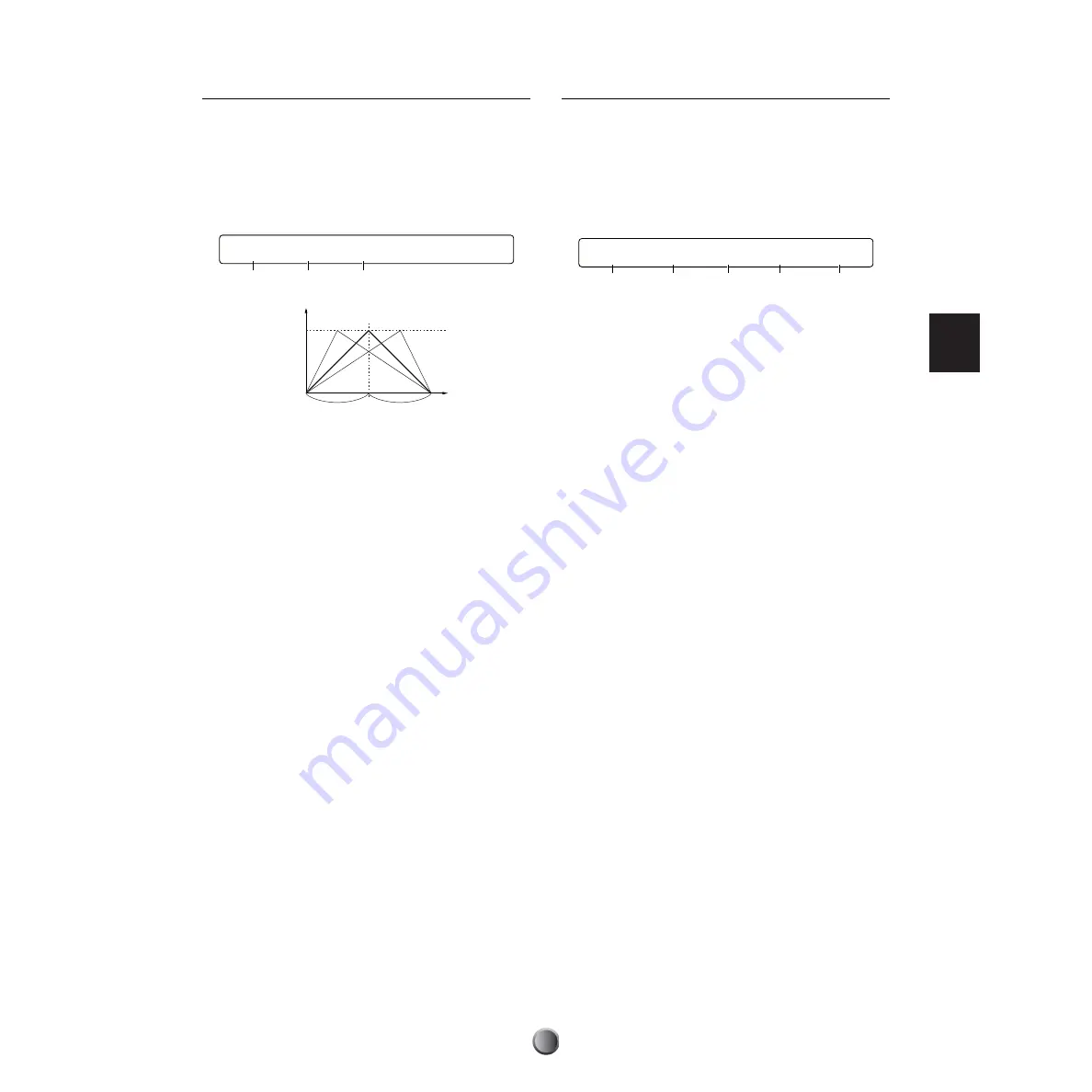
Edit Section
51
[Voice4] Envelope
This page lets you adjust the volume envelope of the voice
assigned to the note number. Every musical instrument has a
unique volume envelope that helps distinguish what kind of
instrument it is. For drum or percussion instruments, their
unique characteristics come from the attack and decay rates
(speeds) in the volume envelope. Adjusting these two factors
lets you create a variety of tonal nuances in the voice.
1
Note Number & Name
Determines a target note number (13~94: C#-1~A#5). Each
note number is shown with a specific note name.
2
Attack
Determines the attack rate of the current voice. The larger
the positive value, the faster the attack rate. The larger the
negative value, the slower the attack rate. Keep in mind that
if the voice originally has a fast attack rate, specifying higher
values cannot make the rate faster past a certain point.
❏
Settings:
–64~+63 (slower to faster)
3
Decay
Determines the decay rate of the current voice. The larger the
negative value, the slower the decay rate. The larger the
positive value, the faster the decay rate. If you want a cymbal
with a long release, set its decay rate to a large negative value.
A large positive value may cause the sound to cut off
unnaturally.
❏
Settings:
–64~+63 (slower to faster)
[Voice5] Polyphony
This page lets you set how many polyphonic voices are
allowed for the specified note number. The built-in tone
generator can play up to 64 polyphonic notes at a time.
However, there may be times when this may not be enough
— particularly if you play along with many parts in a song or
play the drum kit with a large number of short notes. You can
prevent this by limiting the polyphony for each drum voice.
1
Note Number & Name
Determines a target note number (13~94: C#-1~A#5). Each
note number is shown with a specific note name.
2
KeyMode
Determines how the same voice is played in response to
multiple notes.
❏
Settings:
• poly: No limitation until the DTXTREME IIs tone generator
reaches maximum polyphony.
• semi8: Up to eight polyphonic notes — every initial note will be
muted to play the 9th note.
• semi4: Up to four polyphonic notes — every initial note will be
muted to play the 5th note.
• semi3: Up to three polyphonic notes — every initial note will be
muted to play the 4th note.
• semi2: Up to two polyphonic notes — every initial note will be
muted to play the 3rd note.
• mono: Only a single note — each note will be muted by the
subsequently played note.
• himono: Same as mono, but excluded from the last-note
priority rule — notes are never muted by other notes.
n
If a note number (drum pad) is set to mono and assigned with a
voice with a long release (such as cymbal), hitting that pad
continuously will cut off the previous sound unnaturally. However,
setting every note number to poly to prevent this situation is not a
good idea, since this may “steal” polyphony from other important
parts.
[Voice4] Attack Decay
49C#2 0 0
1
3
2
Level
Time
Decay
Attack
Peak
[Voice5] KeyMode AltGrp RvKeyOn RvKeyOff
49C#2 semi2 125 off off
1
4
5
3
2

































